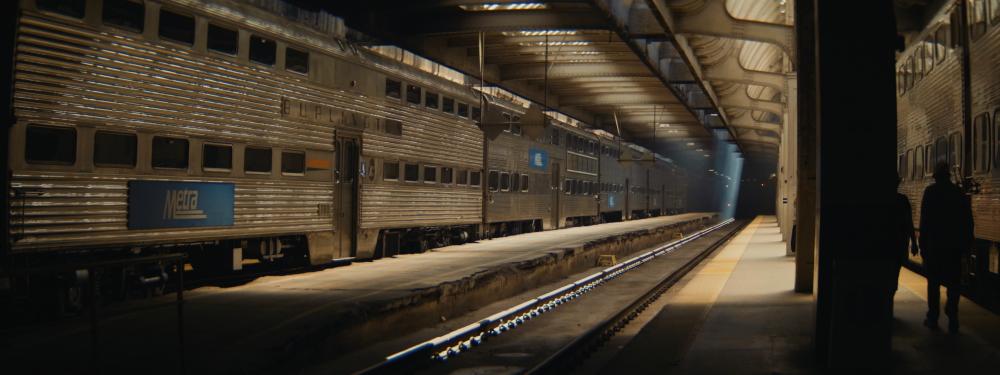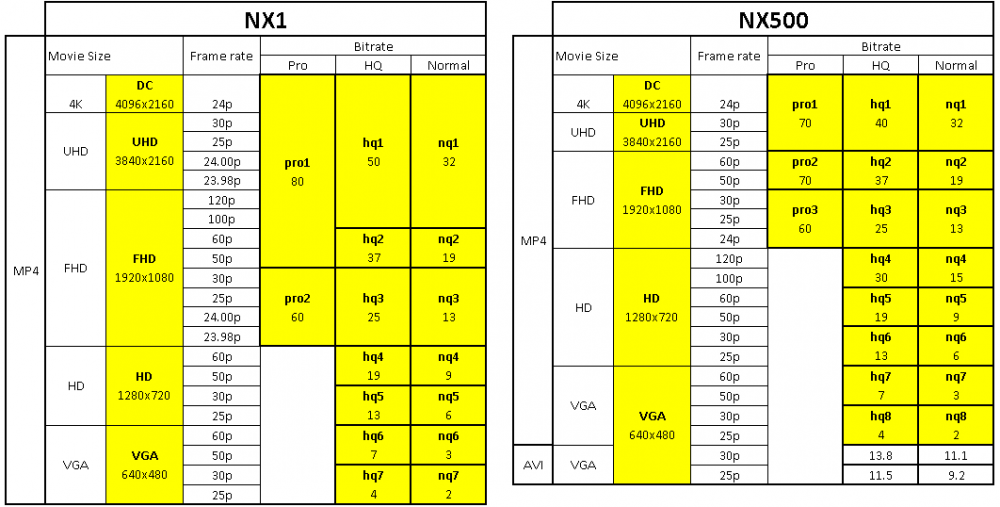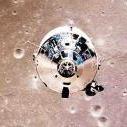Leaderboard
Popular Content
Showing content with the highest reputation on 07/30/2017 in all areas
-

Chicago II - GH5 + SLR Magic 2x 50mm Anamorphic
Yuan and 4 others reacted to AaronChicago for a topic
I decided to shoot a short sequel to my GH4 VLog video "Chicago." Recorded internal at 8 bit on the GH5. Handheld with IBIS. V Log L.5 points -
Arriscope lenses
Tito Ferradans and 3 others reacted to tony wilson for a topic
arriscope are movie lens iscorama is not arriflex and zeiss where pretty crap at anamorphics for years zeiss used moller for making anamorphic projection optics arrii used a famous super talented designer from denmark jan jacobson for ultrascope system using fast zeiss optics ultrascope where designed as movie optics later arri used a couple of folks from zeiss and isco for the arriscope arri is a massive rental house and maker of millions of metal parts plus thousands of cameras they had to work faster than say leica or zeiss. a movie might be starting in 6 months 10 months sometimes 3 months so they had to cut corners because of time issues isco understand bent glass many issues where engineering related but like the todays crummy iomo systems modern rebuilds can transform everything the arri isco glass is designed movie glass vintage used on many cinema releases iscorama maybe amazing and unmatched even today in the sub 10 thousand dollar realm but is was never designed as a proper movie lens. it was used on movies like the battle of britain for crash cams and aerial work but kowa 8z was used on crash cameras on many movies in the 1980s even movies like rambo where he takes on the russians. better blowing up a kowa than a panavision,jdc or technovision 40 thousand dollar optic. iscorama was not used or improved for movie productions because the movie industry is a tight nit thing probably isco did not think to bribe the correct rabbi in hollyweird at this stage panavision dominated arriscope ultascope have expensive 1.4 or 1.7 movie optics inside which are worth money alone. you could use a proskar on a movie today it would not make it a movie lens. iscorama is such an abused term now every turd is iscorama vintage anamorphics suffer from imperfect engineering assemblies and even more so, bad strip down and reassembly over the years arri isco and zeiss the weak link will be arri engineering instead of leaving that to moller or isco arri built assembled themselves. arri camera engineering is superb but you cannot rush without losing something as i said arri had very little experience in anamorphot area even though they made test lens with zeiss isco in the 1950s always sub contract arriscope is rare ish as is ultrascope isco getting a little with all the hipsters dropping them on the floor some of the arriscope ended up in india then faded away rarely rebuilt the glass is good that is what matters. a man wanting an easy life will look for an iscorama or the cheaper options a man with spunk will grab some movie arri optics the new zeiss anamorphics are probably the bigeest leap forward in design since chretien as close to state of the art as it gets today vantage hawk are hiring out sets of fake vintage optics which is the opposite of what zeiss is doing hawk are building in the error from the past and charging serious big bucks for a rental zeiss arriscope is worth a lot more than iscorama i would think a little finger for iscorama a kidney for the arri4 points -
As an enthusiast, I have found it very easy to be distracted with the technical side of filmmaking, 4K cameras included, and not spend as much effort on the basics like composition, lighting, story etc as I should. Maybe there should be an EosHD back to the future GH2 challenge™: only a hacked GH2, 17.5, 25, 42.5mm voigtlander (or equivalent) and a tripod for a year, no reading camera reviews, no LUTs allowed, with monthly online weigh-ins with fellow filmmakers for critical feedback. Would be interesting to see what you were producing at the end of the year.4 points
-

Actually you can make the GH5 look very cinematic!
graphicnatured and 2 others reacted to AaronChicago for a topic
3 points -

Installing the hack
arourke and one other reacted to Andrew Reid for a topic
The original creator's instructions are in the Readme.txt file as part of the download (links below), all credit goes to the hack dev. You must read this before installation. However I thought I might summarise how to get started here in a sticky post to save searching for help (if you need it) in the long threads. PREPARE CAMERA 1. Ensure fully charged battery 2. In the main menu, ensure Auto Display off = 5 minutes and Power Save = 10 minutes 3. In the main menu, ensure Touch Operation = on 4. Ensure firmware is version 1.41 for the NX1 (you can view this in the main menu under the option Device Information). If older, update firmware according to Samsung's instructions online or via Wifi in the camera menus. 5. Format a memory card in-camera 6. Turn off bluetooth and wifi, set mode dial to M PREPARE THE NX-ON-WAKE PATCH 1. From the following link download nx-on-wake.zip https://github.com/ottokiksmaler/nx500_nx1_modding/blob/master/nx-on-wake/nx-on-wake.zip 2. Extract all files in nx-on-wake.zip to the ROOT directory of your SD card. 3. Insert the SD card into the camera, turn on the camera and wait 4. A touch screen menu appears to enter a "Magic Number". This is in the Readme.txt, to ensure you have read it. Please look at that document carefully for the 6 digits. I found "357669" but check to see if different. 5. Message "Thanks, preparing the ground" will appear and the display will go blank momentarily. Green light begins to flash... WAIT AT LEAST 5 MINUTES 6. Leaving the camera powered on, pull the battery out and wait 10 seconds, then put the battery back in. WAIT AT LEAST 4 MINUTES 7. Turn off the camera using the power switch. 8. Pull the battery, wait 5 seconds and put the battery back in. Turn on the camera. 9. Look at the green LED, you will see it blink 4 times (one long and three short blinks), to confirm everything went ok. 10. Turn off the camera and remove the SD card. INSTALL THE MAIN HACK 1. Download nx-patch.zip from https://github.com/ottokiksmaler/nx500_nx1_modding/tree/master/video-bitrate-mods/nx-patch 2. Delete the all the nx-wake related files and folders from the SD card 3. Extract the nx-patch zip and place everything in the root directory of your SD card 4. Insert card into camera, turn on the camera and wait for the 'Please wait, installing...' message and for it to do its thing 5. Hack should now be activated, turn off/on camera and you can enter the hack menus by rapidly double-pressing the LCD illumination button on the NX1 6. In the hack menus (double-press LCD illumination button), you can select bitrates, and change Pro1 from 80 to an even higher value like 160 7. Press the "Make persistent" option to save any modifications so they remain on the camera at next cold boot 8. Please make sure you have the fastest possible SD card for Pro bitrate 4K recording (80Mbit to 160Mbit). Happy shooting!2 points -
GH1/GH2 Hack
EthanAlexander and one other reacted to Jon Jacobs for a topic
FWIW I shot professionally with a hacked GH2 for years, mainly with the Intravenus and Moon patches, and while I certainly liked the quality of that camera's footage, the GX85 I shoot with now is a whole quality level higher across the board. I sold the GH2 after shooting some comparison tests because it wasn’t even close. Panasonic's color science has come a long way in the last few years, and once I saw what was coming OOC with the GX85 the GH2's shortcomings were thrown into stark relief. Skin tone is massively better on the GX85, especially now with the CineD hack. And shooting 4K to export as 1080p gets rid of so much noise I rarely if ever use Neatvideo anymore, while this was a necessary step for any indoor GH2 shoot. I prefer the rangefinder form factor to mini DSLR anyway but ergonomics aside I find the GX85's IQ to be so much better than even the hacked GH2’s 100+MB all-I that I haven’t regretted selling the GH2 for a moment. Everything from video to stills to workflow is better with the GX85.2 points -
Interesting idea... speaking of back to the future and 4K vs. 1080p, how about a little love for 720p? Here's a Seb Farges video from years ago with a hacked GH1 shooting 720p mjpeg... I do like your idea though, even a 30 day challenge, to start, could be exciting. A hacked GH1/GH2, one prime lens and a 3-5 minute short? To be on the nose, it can be called Hack to the Future Film Challenge. ?2 points
-
Yeah, I get the mentality behind why Panasonic wouldn't release such a camera, however I doubt hardware/software limitations are that reason. So that leaves that Panasonic believes they would lose GH5 sales... but would they really? Most people, even most of the high end enthusiasts and low level pros, on this site, will spend the extra cash for the 10bit 4K, but I would assume there is enough of the market that will not. I'd happily spend +/- $1200 for quality 1080p, up to 60p, in 10bit, but I won't spend the extra $800 for the GH5. At that point I may as well save up a little more cash and get a 1DC or wait to see what Sony does with full frame. Panasonic disrupted the entire market by offering 10bit 4K, with all of these features, at a 2000 dollar price point. Now obviously they didn't do that out of the kindness of their hearts, they did it to have a competing, in camera, Log profile that didn't suffer from horrific artifacts. It was either no Log, really bad Log, or a 10bit codec... they chose the latter. Since Panasonic decided to offer so much for so little with the GH5, I don't think it is that unreasonable to WISH they offered higher quality 1080p at a cheaper price point. Obviously Panasonic went all in with 4K to help sell their 4K TVs, especially since they don't sell one interchangeable camera that doesn't have 4K. But they have 3-4 cameras in their line up between $500 and $1000 with questionable 1080p and okay 4K. After $1000, there is a huge market gap before the GH5. How should they fill that gap? Since it's unlikely they'll ever offer a 1080p only camera at this point, the next logical step would be to combine the 100mbps 8bit 4K from the G85 with the 10bit all-i 200mbps 1080p from the GH5. As far as beating a dead horse... every other thread in this forum beats a dead horse, so I don't believe discussing a hypothetical 1080p camera in a 4K vs 1080p discussion is all that ridiculous.2 points
-
Thanks for the digging JCS, yes Direct Focus Area is what is being turned on automatically when I mount any adapted lens with manual focus. I guess panasonic are right in assuming that when mounting manual focus glass you will want the Direct Focus Area tool working. My desire was eliminate everything off of my composition screen. Unfortunately it looks like I just can't get rid of this manual focus box. (at least when using manual focus only lenses) When I mount my olympus 12mm which can utilize AF I found some options change. I can now select which kind of AF mode I want, and I found that indeed selecting the 225 point AF area will remove the box (the center cross still stays, but.. OK) However, the second I unmount the lens the little Direct Focus Area box comes back. At this point I have literally tried everything. I guess I still could be missing something, but i'm fairly certain that when using an MF lens, this box pops up automatically with no option to hide it. Silver lining, in my intense digging I discovered as Jonpais said the four directions on the rear wheel can be configured as 4 additional custom buttons! (for anyone wondering, pressing DISP in the "Fn Button Set" brings up options to configure the wheel as a 4 way D-pad like button, and on the GH5 the new thumb nub can have itself configured as a 4 way) I find that pretty damn cool even though I'm running out of needs to configure haha.2 points
-
Chicago II - GH5 + SLR Magic 2x 50mm Anamorphic
AaronChicago reacted to icarrere for a topic
Hi Aaron, the 50mm exhibits quite a lot of distortions as well, and it is more noticiable as the main actor is the city and its buildings. The stablilization in camera doesn´t play well with anamorphics together and doesn't help. But I like a lot your skills (all the other related things were the tools), the colour you've done and the shoots in general, the composition, your eye.1 point -
I totally agree. In a weird way, the limitations excite me. I'm even considering a GH1 or GH2 purchase just so I can be forced to produce something within some confines. In the end none of this matters and some kid is going to make the next best indie film in an iPhone, so shoot with what you have and make the best of it. Now I won't sell my 5D3, but I do like the challenge of shooting something with a 6-7 year old camera.1 point
-

Chicago II - GH5 + SLR Magic 2x 50mm Anamorphic
EthanAlexander reacted to AaronChicago for a topic
Thats the IBIS. I usually turn it off when i have the camera/lens on a shoulder rig but that day i was carrying just the GH5 body and lens.1 point -
Different codecs will have a lot of impact yes, so if you're going big it's best to transcode everything into the same format, the newer version of Premiere allows you to automatically transcode all footage as ur ingesting and still being able to edit. You can also use Adobe Encore for the transcoding upon ingestion. Also the way you import footage can have a lot of impact on performance, even though the files aren't actually added (such as XMLs that aren't accepted or text files from importing folders). So when you import files in a bigger project, make sure to only import files supported by Premiere. It may benefit you to transcode every video file over night(s) and relink the media to the transcoded version. Not so sure of how the 2 different versions compare to indexing though, but maybe increasing cache size or something to store the index data is possible?1 point
-

Drone for a A6500 / A7R ii / A7S ii
Mako Sports reacted to OliKMIA for a topic
There are plenty of drone available to lift your Sony camera. Now while finding the airframe and dynamic parts is relatively easy, having a good machine, tuned correctly is more challenging. You'll have to balance the drone properly, set the right PIDs for the flight controller, handle the vibration, balance the props and possibly the motors, use one of these huge 6S or 8S battery that are very expensive with a dedicated charger. Chargin the battery itself is an operation (balancing, need DC source for fast charging, must not overdischarge, etc.). Your flight time will be limited to 10-15 min max. The key point is the gimbal, it must be able to handle the load and be balanced correctly. Everytime you change the lens you will have to rebalance the gimbal and/or change the gimbal settings (PIDs, motor load, etc.). A DJI S1000 can handle the weight and there are plenty available on the used market. The Z15 gimbal would work but there isn't much room for fine tuning with DJI. A S900 + FTBO G10 could work too. Then comes the problems of controlling everything, expo settings, triggering the camera, etc. If you opt for a do it yourself solution, the flight controller won't be synchronized with the gimbal and you'll have limited access to the cam settings. In terms of video you can choose the DJI lightbridge 2 or Amimon for digital link.. You can also go the analog route with a 5.8 GHz system and cam switch for the FPV/HD cam. If you need two video feeds (pilot and operator), you can combine the solutions). But the 5.8 GHz system won't be as user friendly. Honestly at this price point I would consider the Inspire 2, it will make your life so much easier. Well, the kit price point is around $6000 with the X5S camera (micro 4/3). In the end it really depends of your technical skills and will to get your hands dirty with building and tuning.1 point -
Sanity X and Flowmotion were both great, a solid balance between quality, file sizes and reliability.1 point
-

Chicago II - GH5 + SLR Magic 2x 50mm Anamorphic
AaronChicago reacted to DBounce for a topic
I like it. Was the setup hard to work with? What taking lens were you using?1 point -
Chicago II - GH5 + SLR Magic 2x 50mm Anamorphic
AaronChicago reacted to mercer for a topic
Wow, that did come down nicely. How much usable DR do you think the GH5 has? Also, being a UM46 owner and a GH5 owner, how do you think they compare... if they're even comparable at all? Btw, I would love to learn a little about the color work. It has a modern sepia tone look to it. Very interesting.1 point -
Arriscope lenses
zerocool22 reacted to tony wilson for a topic
if you have to ask the question you should get a kowa 8z or an iscorama movie optics where mede in sets the historical and filmaking value is in the set complex assemblies need old men to repair or improve just because google is shit with a lack of information means nothing. just means some hipster blogger has played with some old beat up lens and he says that it was not good. rushed past engineering bad past repair or patch up can be sorted today jan jacobson did not mess about if he was around today he would be working with christopher nolan the later arriscope used similar designs to the earlier ultrascope but with more help from zeiss and isco without testing the optic who knows what it is worth is it pl,bncr arri bayonet some russian mount does the optic have chips rainbow compression the focus helicoid may be good now for gentle landscape work but not for aggresive movie use but will never be great without a big expensive rebuild that is why the rental companies buy them up cos they can throw big money at a modern rebuild. if these things are turds why have vantage hawk spent a million dollars reverse engineering back in all the bloody past optical error the past stuff is good cos those old farts cared and did not cut costs it cost whatever it cost they tried to out do each other they where proud today it is all idea theft and trading on the past and undercutting if the optic is local test an iscorama test a kowa then go and test the 3.5 kg heavy beast arri arm flex1 point -
Chicago II - GH5 + SLR Magic 2x 50mm Anamorphic
AaronChicago reacted to mercer for a topic
Really nice work Aaron. I was a fan of your original Chicago film and this is a fitting sequel. The good, the bad and the ugly... The Good - excellent color work, you are really making that GH5 shine!!! The Bad - the boat was a little hot, but that would have been a hard shot without letting that creep around 100 IRE. So the bad is actually a testament to exposing that difficult shot so well. The Ugly - the moire is crazy. Is that only in 4K 8bit or is there a lot of moire in the other codecs as well? But I was stretching to even make a complaint because the whole piece looked excellent. I wish you guys would stop trying to get me to spend my money. I wanted to add that the composition is amazing. That subway shot is a work of art. I'd love to see a B&W version of it.1 point -
Hey meanwhile, Glad you're interested in getting started with video. Reading this thread I see you're finding about everything at once, and there sure are a multitude of facets when it comes to shooting and editing motion pictures of any kind. And each facet goes deep. My 2 cents: You have to learn some real basics first and reading is only gonna take you so far. Doing is the only way. And to "Do" you need to build yourself some structure into this learning experience. I would stop worrying about cinelikeD and picture profiles and color. That's chapter 6 and you're still on the introduction. You have a camera and you have a computer with some editing software. You need to shoot something, edit it, and show it to an audience. These steps will always be part of the process and trust me you're gonna look back on your first stuff later and have a good laugh so it doesn't mean shit what picture profile you shot it in. So what to shoot? Pick anything but having a clear goal will help you get it done and the first rule of filmmaking is "Always finish the film." Traveling somewhere? Make a 3 min film about a place you go. Or better yet, make a 3 min short about your hometown. If you have an interesting shop in town, ask the owner if you can make a video about the shop. 5 min max. Then shoot it and edit it. And post it. Then do it again. A good resource I love: the Vimeo Weekend Challenge group. Every 2 weeks Vimeo staff post a challenge prompt for you to complete over the weekend. Simple stuff, like "Film your Dream from last night" "Make a video consisting of 5 clips of 5 seconds each" These are exercises with defined objectives and are great at building skill. The short time limits are a blessing too because they take less editing time and less shooting space. I see a lot of first time filmmakers start a documentary that ends up being 20 mins long and they get burnt out. No need to do that yet, just start making stuff. As you go you'll realize your sound isn't what you want. And then you move on to tackling sound. Once picture and sound are looking and sounding good you can start tweaking your picture profiles and really getting the look you want. Another easy project can just be a montage of footage to music. You have a lot of grey skies so maybe make a little moody short with grey landscapes and some music you find intriguing. Each project will contain technical lessons to learn, and it'll be easier than trying to learn about all of it theoretically without ever even starting. So there's how I would start. Looking forward to seeing what you create.1 point
-
I have no idea at all why you think someone writing an article that technical doesn't know what a curve is just because he doesn't discuss them in an article where they are largely irrelevant to the point being made - which is that Bayer sensors, film and Foveon have different highlight behaviour, and the last two are more organic. Ditto white balance. ..If everyone writing an article about anything stopped to point out every possible related point, no matter how obvious... Well, it might help some people, but it would be a drag for the rest of us.1 point
-
Honestly there's this weird myth that you need to be a grading expert to bother with raw. Nothing could be further from the truth. It's quite easy to get a standard realistic look with raw files. The only difference is now you have tons of room to adjust the exposure/highlights/shadows. It *is* wonderful if you want to get into to heavy grading, but you certainly don't have to. raw, at least with the blackmagic pocket and micro, is a really easy workflow. I think you'd grow quite fond of working with those files.1 point
-
BM Film Log is just the Log Profile in BlackMagic cameras. I assume it just records what the G85 is set to in camera, especially since your LUT seems to react to CineLikeD just as it would with straight from the camera files.1 point
-
Which is better for green screen, GH5 10 bit 4K, or BMPCC RAW?
EthanAlexander reacted to deezid for a topic
The GH5 would be, since it's oversampling from 5k, but the processing limits its performance. The best you can probably get is the FS5 with external RAW, it's flawless.1 point -

Actually you can make the GH5 look very cinematic!
PannySVHS reacted to AaronChicago for a topic
Ha. Well that previous shot of the guy in front of a bookshelf is for a client, and might take 2-3 weeks till its up. This one above I'm going to try and edit tomorrow.1 point -
The box stays up in MF mode (using native lens). Searching for Direct Focus Area found this: https://***URL removed***/forums/thread/3677576 See last post here; might help: http://www.dvxuser.com/V6/showthread.php?325388-Turning-off-focus-pinpoint1 point
-
Actually you can make the GH5 look very cinematic!
AaronChicago reacted to PannySVHS for a topic
Aaron, enough of these. This is your second post with awesome screenshots within one week. And again no moving images. How can you do this to us? When will you be showing us some of that kewl footage?1 point -
1080 vs. 4K: What is REALLY necessary?
webrunner5 reacted to PannySVHS for a topic
Holy cow, rewatching the Concrete Island piece from Michael Mills. At 36 seconds- epic shot. Movement within the frame, framing, geometry, light, location. Perfect! And how generous these afficiandos have been on background info, like on this one: Olympus 17mm F1.8 coupled with the AG-LA7200 anamorphic adapter. Camera: GH2 (1080p24, Dynamic B&W Film Mode) Additional filters: Black Pro-Mist 1/4, Red 1 (25) Looking epic, this epic GH2. Check out Andrew Reids GH2 stuff, no ugly muddy LUTs, just nice study of composition, light and movement and lens choice.1 point -
I think these GH1 and GH2 pioneers put a lot of art and craft into the creation of every frame. Like going by Tony Zhous motto "every frame a painting", they have been following the route "every frame a stills photograph". Check out Michael Mills´s GH2 pieces and vignettes of art. Quality ratio of GH2 and GH1 and 5DII on vimeo is very high.1 point
-
It's funny, I spent a good portion of yesterday watching old hacked GH1/GH2 videos and it's amazing how close these manufacturers were to perfect FHD and then just abandoned it for 4K... some of which is still kind of thin and brittle. I agree the downscaling does help to create better 1080p, but I often wonder if that wouldn't be better done in camera like the C100. I'm no tech guru, so I'll leave the intricacies up to others, but I am curious why video from a GH1 looks better, to me, than the video from a modern 4K camera?1 point
-

Camera resolution myths debunked
EthanAlexander reacted to Emanuel for a topic
Acquisition is actually the key.1 point -
Although I'm not in the market for a GH5, there are some used ones for sale at BH if you want to save two to four hundred dollars... depending on condition.1 point





